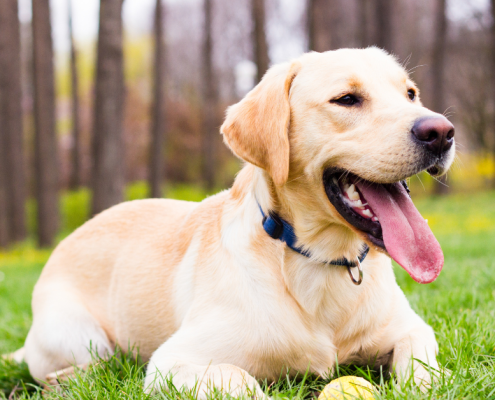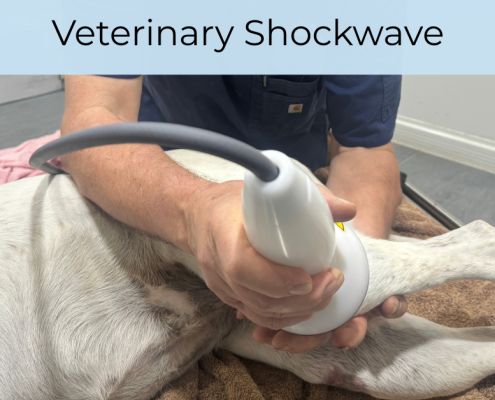How to Prevent Cruciate Injury in Your Dog’s Other Leg
If your dog has already torn one cruciate ligament, I need to tell you something that might be hard to hear: there’s approximately a 40-50% chance their other leg will tear too.
I know. That’s a scary statistic when you’ve just survived surgery, weeks of cage rest, and months of rehabilitation. You’re finally seeing your dog walk normally again, and now you’re told the other leg is at risk?
But here’s the good news: understanding why this happens – and working with professionals to take specific preventive steps – can dramatically reduce your dog’s risk of becoming a bilateral cruciate statistic.
Why Is the Other Leg at Such High Risk?
Research shows the average time until the second leg ruptures is about 58 weeks after the first, though it can happen anywhere from weeks to years later.
Here’s why the second leg is vulnerable:
The Same Underlying Factors Are Still Present
In most dogs, cruciate ligament rupture occurs due to progressive degeneration of the ligament over time, not from a single traumatic event. This means whatever factors caused the first ligament to weaken – genetics, body conformation, inflammatory processes – are affecting both legs.
Compensation Patterns Create Additional Stress
After one leg is injured, your dog naturally shifts more weight to the opposite leg – not just during recovery, but often permanently if rehabilitation isn’t thorough. This increased load accelerates degeneration in the “good” leg.
Muscle Loss Affects Both Legs
Studies show that after just 5 weeks from cruciate rupture, the thigh circumference decreases significantly if no targeted intervention is performed. But it’s not just the injured leg, the opposite leg often loses muscle too due to reduced overall activity and altered movement patterns.
Weak muscles mean less support for the joints, increasing stress on the ligaments.
The Most Important Things You Can Do Right Now
1. Work With Professionals – Not Dr. Google
Here’s what many dog owners don’t realize: every dog’s biomechanics, healing stage, and risk factors are different. What worked for someone else’s Labrador might be completely wrong for your dog.
Cookie-cutter online exercise programs can actually do more harm than good if they’re not tailored to your dog’s specific:
- Stage of healing in the surgical leg
- Degree of muscle loss in both legs
- Gait compensations and movement patterns
- Underlying conformational issues
- Age, weight, and activity requirements
The wrong exercises at the wrong time can overload the vulnerable leg you’re trying to protect.
This is why working with a veterinary professional certified in rehabilitation is crucial. They can assess your individual dog and create a targeted prevention plan – not a one-size-fits-all approach.
2. Weight Management Is Non-Negotiable
Obesity greatly increases the risk of injury to the other knee, especially during the recuperation period. Every extra kilogram your dog carries puts additional strain on those already-vulnerable ligaments.
Work with your veterinarian to:
- Assess your dog’s ideal weight
- Create a realistic weight loss plan if needed
- Monitor progress monthly
- Adjust as necessary
Real talk: This might be the single most important thing on this list. A lean dog puts significantly less stress on their joints with every single step.
3. Get Professional Guidance on Strengthening
Core strengthening exercises are commonly included in injury prevention programs and have been shown to be beneficial in preventing cruciate rupture. But here’s the critical part: the exercises must be appropriate for your dog’s current condition and performed correctly.
A qualified canine rehabilitation professional can:
- Assess which muscles are weak and need targeting
- Teach you the correct form and progression
- Identify compensatory movement patterns that need addressing
- Monitor progress and adjust the program as your dog improves
- Catch problems before they become injuries
Attempting strengthening exercises from YouTube or generic online programs without professional guidance risks:
- Overloading the vulnerable leg
- Reinforcing incorrect movement patterns
- Progressing too quickly and causing strain
- Missing subtle signs of developing problems
4. Modify Activities – With Expert Guidance
You need to think differently about your dog’s activities going forward, but knowing exactly which activities are safe requires understanding your individual dog’s mechanics.
A rehabilitation professional can help you:
- Identify which specific activities are high-risk for your dog
- Find appropriate alternatives that provide exercise without excessive stress
- Understand how to recognize when your dog is compensating
- Create a long-term activity plan that keeps them fit without risking injury
5. Watch for Early Warning Signs – And Act Immediately
Dogs with bilateral cruciate rupture tend to be younger when the second leg fails, so vigilance is crucial.
Signs to watch for:
- Subtle stiffness after rest
- Slight “bunny hopping” when running
- Sitting with the leg splayed out
- Reluctance to jump up or down
- Any limping, even if intermittent
Don’t wait and see. If you notice any of these signs, contact your vet or rehabilitation professional immediately. Early intervention can make the difference between managing a partial tear and facing another surgery.
6. Consider Ongoing Preventive Rehabilitation
Don’t wait until the second leg tears. Proactive rehabilitation can strengthen supporting structures and identify weakness before it becomes an injury.
Professional rehabilitation options:
- Regular physiotherapy sessions with assessment
- Hydrotherapy with trained professionals
- Veterinary-supervised home exercise programs
- Ongoing monitoring and program adjustments
The key word here is supervised. Having a professional regularly assess your dog’s progress, gait, and muscle development ensures you’re on the right track – not inadvertently making things worse.
Why Professional Guidance Matters More Than Ever
After your dog’s first cruciate surgery, the stakes are higher. The remaining leg is already compromised, and making mistakes in rehabilitation or prevention can have serious consequences.
Consider this: Would you trust a YouTube video to teach you physiotherapy after your own knee surgery? Or would you want a trained physiotherapist assessing your specific needs, correcting your form, and monitoring your progress?
Your dog deserves the same level of professional care – especially when trying to prevent a second surgery.
The Honest Truth About Prevention
Even with professional guidance and perfect compliance, the second leg might still tear. Genetics plays a significant role that we can’t change.
But working with qualified professionals dramatically improves your dog’s odds. Every dog that receives appropriate, individualized preventive care has a better chance than one relying on generic online advice.
Creating Your Prevention Plan
This week:
- Schedule a consultation with a veterinary rehabilitation professional
- Have your vet assess your dog’s current weight and overall condition
- Discuss your concerns about the second leg
Ongoing:
- Follow the individualized plan created by your rehabilitation professional
- Attend scheduled follow-up appointments
- Report any concerning signs immediately
- Don’t make changes to the program without professional guidance
The Bottom Line
Your dog has already been through cruciate surgery once. You’ve seen the pain, the recovery, the expense, the stress. The absolute best thing you can do is work with qualified professionals to prevent going through it again.
Your dog’s second leg doesn’t have to become a statistic – but preventing it requires more than DIY guesswork.
With professional guidance, appropriate individualized care, and vigilance, you can dramatically reduce the risk and give your dog the best chance at keeping both back legs strong and healthy for years to come.
Need Professional Support for Your Dog’s Recovery and Prevention?
Contact us for professional assessments, individualized exercise recommendations, and expert monitoring to protect your dog’s remaining leg.





